#red-rumped agoutis
Text

Grzimek's Animal Life Encyclopedia, vol. 11, Mammals II. 1972. Illustrated by Peter Barrett.
1.) Patagonian mara (Dolichotis patagonum)
2.) Chacoan mara (Dolichotis salinicola)
3.) Capybara (Hydrochoerus hydrochaeris)
4.) Pacarana (Dinomys branickii)
5.) Mountain paca (Cuniculus taczanowskii)
6.) Lowland paca (Cuniculus paca)
7.) Red acouchi (Myoprocta acouchy)
8.) Black agouti (Dasyprocta fuliginosa)
9.) Red-rumped agouti (Dasyprocta leporina)
#rodents#patagonian maras#chacoan maras#capybaras#pacaranas#mountain pacas#lowland pacas#red acouchi#black agoutis#red-rumped agoutis#Peter Barrett
352 notes
·
View notes
Text




Red-rumped agouti
Dasyprocta leporina
Family Dasyproctidae, infraorder Caviomorpha, order rodentia
Also known as the golden-rumped agouti, orange-rumped agouti and Brazilian agouti.
They live in bonded pairs, or family groups when they have children. They mate for life.
They eat seeds, pulp, leaves, roots and fruits. They also sometimes eat insect larvae when other food is unavailable.
They will eat brazil nuts and will often bury them for later, like squirrels.
They are generally between 3 and 5.9 kg (6.6 to 13 lbs), and grow to between 49 and 64 cm (19 to 25 in) long with tails no longer than 6 cm (2.4 in). Females are usually larger than males.
They communicate with grunts, squeals, screams, and body language.
They are crepuscular, like guinea pigs.
@jackalspine @fifiibibii
52 notes
·
View notes
Photo



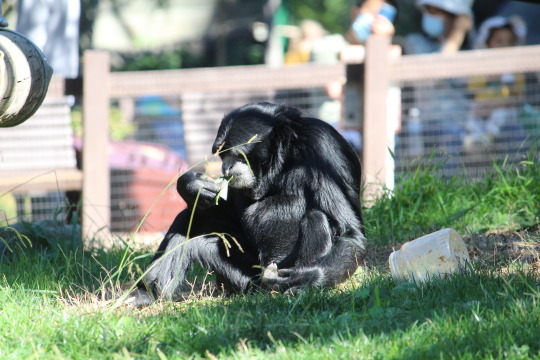



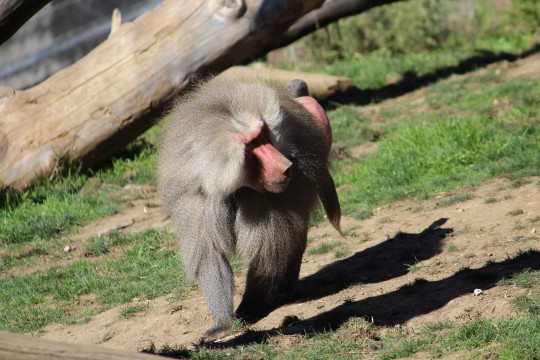

Oakland Zoo, October 2022
(Pictured: White-Handed Gibbons, Siamang, Sun Bears, Red-Rumped Agouti, Hamadryas Baboon, Slender Tailed Meerkat)
#Oakland Zoo#my pictures#expect more in the coming days#unfortunately my camera was suffering from a bad case of 'wants to photograph fences' disease and manually focusing was slow#so many of my pictures are blurry (or of fences)
8 notes
·
View notes
Photo

Some creature videos from Fort Wayne Children’s Zoo: 1) Capuchin monkey washing and inspecting his sticks 2) Allen’s swamp monkeys 3) Red-billed hornbill pair sharing a snack 4) Banded mongooses 5+6) Northern tree shrew 7) Red-rumped agouti 8) Ostrich 9+10) some local wildlife enjoying the zoo grounds! (at Fort Wayne Children's Zoo) https://www.instagram.com/p/ChdWWZKpNVu/?igshid=NGJjMDIxMWI=
0 notes
Text
My favourite Dasyproctids

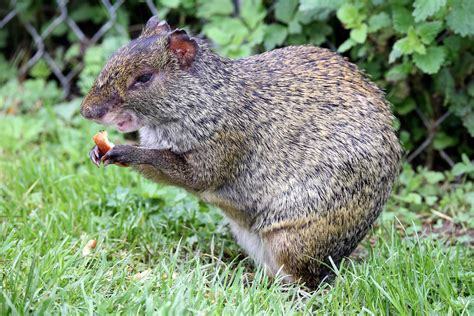


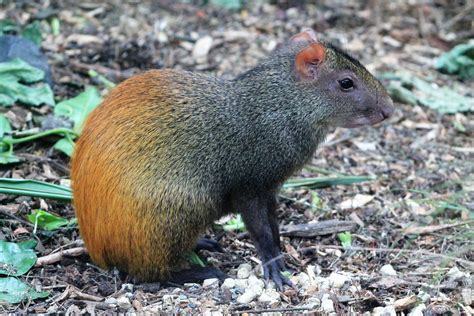

#mexican agouti#azara's agouti#black agouti#green acouchi#red rumped agouti#black rumped agouti#Dasyproctidae#dasyproctids#rodents
2 notes
·
View notes
Photo

Red-rumped agouti at the Smithsonian National Zoo in Washington D.C.
5 notes
·
View notes
Text
Study measures impact of agriculture on diet of wild mammals
https://sciencespies.com/biology/study-measures-impact-of-agriculture-on-diet-of-wild-mammals/
Study measures impact of agriculture on diet of wild mammals
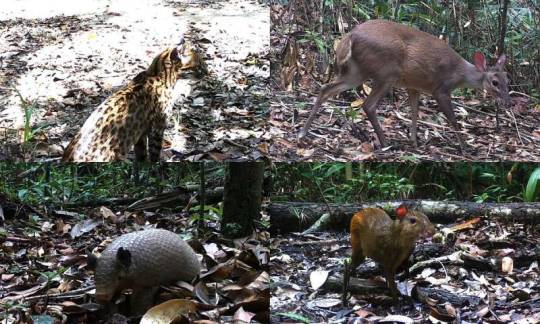

Clockwise: Southern tiger cat [Leopardus guttulus]; Brocket deer [Mazama spp.]; Greater naked-tailed armadillo [Cabassous tatouay]; Red-rumped agouti [Dasyprocta leporina] Credit: ICMBio / CENAP
Margays (Leopardus wiedii), small wild cats living in forest areas fragmented by agriculture near Campinas and Botucatu in São Paulo State, Brazil, prey on animals inhabiting nearby sugarcane plantations such as birds and small rodents.
The diet of other mammals, such as the herbivorous Wild cavy (Cavia aperea) or the omnivorous Crab-eating fox (Cerdocyon thous), is also influenced by the region’s agriculture. They live in areas of native vegetation, but often have to seek food in fields of corn, sugarcane or pasture in order to survive. The cougar (Puma concolor), capybara (Hydrochoerus hydrochaeris), brocket deer (Mazama spp.), ocelot (Leopardus pardalis) and crab-eating raccoon (Procyon cancrivorus) have also adapted their diet in comparison with animals living in large areas of well-preserved forest.
These examples, described in an article published in Proceedings of the National Academy of Sciences (PNAS), confirm the hypothesis that in addition to its negative effect on wildlife in terms of species richness, diversity and abundance, agriculture also impacts the diet and habitat use of wild mammals living in areas of fragmented forest near croplands and pasturelands.
“Forest remnants and the agricultural matrix aren’t separate. There’s an interface between these areas. It’s hardly news that animals need to find food in plantations, but this practice hadn’t been quantified until now. I should stress that the diet in question isn’t ideal. It’s a matter of survival,” said Marcelo Magioli, who at the time had a Ph.D. scholarship from FAPESP and is first author of the article.
According to the study, the impact of agriculture on conservation relates not just to deforestation and forest fragmentation, but also to the alterations brought about by the process in the diet of wild animals. The researchers stress the need for adequate management of human-modified environments to support wildlife survival.
“Our findings point to the need for more favorable agricultural management to support these animals and underscore the importance of the Brazilian Forest Code and of maintaining legal reserves and permanent conservation areas [APPs],” Ferraz said.
Records of feeding habits
To measure how much the diet of these mammals had been altered by the influence of the agricultural matrix, the researchers analyzed stable carbon and nitrogen isotopes in the animals’ fur. The method, widely used in trophic studies of marine animals, identifies the type of food consumed in a period of approximately three months and the individual’s position in the food chain.
Because the Margay is an endangered species and many of these other animals are also threatened with extinction, the researchers used noninvasive techniques such as hair traps and collection of droppings. Samples were collected in four areas of São Paulo State—two areas next to croplands in Campinas and Botucatu and two conserved areas in Serra do Mar and Serra de Paranapiacaba mountain ranges.
Samples were collected from 29 species of mammals, with 194 samples coming from individuals that lived in human-modified areas and 126 from individuals in well-preserved forest areas.
“From previous studies using GPS collars and camera traps, we knew the animals moved through these areas,” Magioli said. “However, stable isotope analysis told us where they were feeding and how important each food source was in their diet.”
So near yet so far
According to the researchers, while 34.5 percent of individuals based on forest fragments within human-modified areas fed only on agricultural resources, 67.5 percent of the animals living in large areas of well-preserved forest fed mainly on forest resources.
“There’s a very big difference in the diets of these two groups of mammals. Given the different species compositions of the two types of areas, we grouped the animals according to diet: carnivores, omnivores, herbivores, frugivores and insectivores,” Magioli told.
In the comparison, frugivores and insectivores consumed the same resources regardless of where they lived. Herbivores and omnivores inhabiting forest fragments were the most affected and tended to consume agricultural resources. Carnivores in this environment close to croplands consumed a relatively high proportion of prey that feed on agricultural resources.
“We can conclude that in landscapes with scant forest cover, small fragments prove insufficient to supply the resources species need,” Magioli said.
Another finding of the research relates to the effects of organic fertilizer on the animals, especially herbivores, and the impact of sugarcane burning on soil nitrogen cycling and hence on the plants consumed by the animals.
“We observed a difference in nitrogen isotope values in the fur of animals living in forest fragments. Because they consume resources from the agricultural matrix, nitrogen levels are higher, as is the case in the soil, for example. Nitrogen levels typically rise from the bottom to the top of the food chain, so it’s harder to explain the order of the food chain for these modified areas, different as it is from that of preserved areas,” Magioli said.
Explore further
Connected forest networks on oil palm plantations key to protecting endangered species
More information:
Marcelo Magioli et al, Human-modified landscapes alter mammal resource and habitat use and trophic structure, Proceedings of the National Academy of Sciences (2019). DOI: 10.1073/pnas.1904384116
Provided by
FAPESP
Citation:
Study measures impact of agriculture on diet of wild mammals (2019, November 19)
retrieved 19 November 2019
from https://phys.org/news/2019-11-impact-agriculture-diet-wild-mammals.html
This document is subject to copyright. Apart from any fair dealing for the purpose of private study or research, no
part may be reproduced without the written permission. The content is provided for information purposes only.
#Biology
18 notes
·
View notes
Photo

RED-RUMPED AGOUTI Dasyprocta leporina ©Laura Quick This is a BIG rodent - maybe the size of a Maine Coon cat. Red-rumped agoutis weigh about 3 to 6 kilograms (6.6 to 13.2 lb). They are about 19 to 25 inches (48 to 64 cm) long. In this species the females are larger than males but otherwise look similar. They are brownish with darker spots on the upper body. The fur becomes more orange as it goes past (going down) the middle area of the animal. The ears are somewhat square in shape. The front feet have 4 toes and the back have 3. They can be distinguished from other agoutis by their distinct coloring. They are member of the order Rodentia — they have ever-growing front teeth with enamel on on the front edge only, that they wear down by chewing. This agouti proceeded to go to town on the log it's standing beside. #redrumpedagouti #agouti #dasyproctaleporina #centralamerica #southamerica #caribbean #venezuela #guyana #suriname, #frenchguiana #brazil #trinidad #tobago #lesserantilles #herbivore #rodent #animal #nocturnal #19-25" #9-13lbs #bigrodent #evergrowingteeth #losangeleszoo #behindthescenes #©lauraquick #lazoo #glaza #losangeleszooandbotanicalgardens #lazoodocentclass https://www.instagram.com/p/B7Tm8wtHZT8/?igshid=1clg4eeogeafu
#redrumpedagouti#agouti#dasyproctaleporina#centralamerica#southamerica#caribbean#venezuela#guyana#suriname#frenchguiana#brazil#trinidad#tobago#lesserantilles#herbivore#rodent#animal#nocturnal#19#9#bigrodent#evergrowingteeth#losangeleszoo#behindthescenes#©lauraquick#lazoo#glaza#losangeleszooandbotanicalgardens#lazoodocentclass
2 notes
·
View notes
Text
Zookeeping Nonsense
So I was at the zoo with my gf the other day and we were joking about all the birds/beasts we eventually want to keep, and she made a passing comment about us needing our own zoo. Completely joking of course, but me being the incorrigible nerd that I am I started to wonder if my selection of favorites might actually be viable in a smaller zoo setting. So for those zookeepers or any other keepers of animals on my list, your opinions on it would be most appreciated. Keep in mind, this list isn’t all of my favorite animals or even all the animals I want to keep, but those I would feel relatively confident in providing adequate care for (with help) and that would do well in captivity. I do not actually intend on having a zoo, I just want to see your thoughts.
Mammals
-Red kangaroo (Macropus rufus)
-Eastern grey kangaroo (Macropus giganteus)
-Red necked wallaby(Macropus rufogriseus)
-Giant anteater (Myrmecophaga tridactyla)
-Tamandua (Tamandua spp.)
-Grey fox (Urocyon cinereoargenteus)
-Bat eared fox (Otocyon megalotis)
-Coatimundi (Nasua spp.)
-Greater kudu (Tragelaphus strepsiceros)
-Giant eland (Taurotragus derbianus)
-Warthog (Phacochoerus africanus)
-Bactrian Camel (Camelus bactrianus)
-Reeve’s muntjac (Muntiacus reevesi)
-Blue duiker (Philantomba monticola)
-African crested porcupine (Hystrix cristata)
-Lowland paca (Cuniculus paca)
-Red rumped agouti (Dasyprocta leporina)
-Llama
-Alpaca
-Barbados blackbelly sheep
-Spanish and nubian goat
-Kunekune pig
Birds
-Ruddy Duck (Oxyura jamaicensis)
-Mandarin duck (Aix galericulata)
-Pygmy Goose (Nettapus auritus)
-Black Necked Swan (Cygnus melancoryphus)
-Muscovy duck (Cairina moschata)
-Victoria Crowned Pigeon (Goura victoria)
-Pheasant Pigeon (Otidiphaps nobilis)
-Nicobar Pigeon (Caloenas nicobarica)
-Crested pigeon (Ocyphaps lophotes)
-Common Bronzewing (Phaps chalcoptera)
-Luzon Bleeding Heart (Gallicolumba luzonica)
-Kori Bustard (Ardeotis kori)
-Silver Pheasant (Lophura nycthemera)
-Lady Amherst's Pheasant (Chrysolophus amherstiae)
-Helmeted guineafowl (Numida meleagris)
-Wild Turkey (Meleagris gallopavo)
-Peacock (Pavo cristatus)
-Brush turkey (Alectura lathami)
-Rosses Turaco (Musophaga rossae)
-White cheeked turaco (Tauraco leucotis)
-Livingstone's turaco (Tauraco livingstonii)
-Red billed hornbill (Tockus erythrorhynchus)
-Laughing kookaburra (Dacelo novaeguineae)
-Superb starling (Lamprotornis superbus)
-Violet Starling (Cinnyricinclus leucogaster)
-Purple glossy starling (Lamprotornis purpureus)
-White crested laughing thrush (Garrulax leucolophus)
-Red-legged Honeycreeper (Cyanerpes cyaneus)
-Bearded Barbet (Lybius dubius)
-Red-crested Cardinal (Paroaria coronata)
-Pekin Robin (Leiothrix lutea)
-Emu (Dromaius novaehollandiae)
-Ostrich (Struthio camelus)
-Greater Rhea (Rhea americana)
Reptiles
-Blue tongue skink (Tiliqua scincoides)
-Shingleback Skink (Tiliqua rugosa)
-Monkey tailed skink (Corucia zebrata)
-Fire skink (Lepidothyris fernandi)
-Crested gecko (Correlophus ciliatus)
-Mossy prehensile tailed gecko
-Leachie Gecko (Rhacodactylus leachianus)
-Mourning gecko (Rhacodactylus chahoua)
-Fat tailed gecko (Hemitheconyx caudicinctus)
-Knob tailed gecko (Nephrurus spp.)
-Giant day gecko (Phelsuma grandis)
-Black and white tegu (Salvator merianae)
-Caiman lizard (Dracaena guianensis)
-Black spiny tailed iguana (Ctenosaura similis)
-Rhinoceros iguana (Cyclura cornuta)
-Gila monster (Heloderma suspectum)
-Mexican beaded lizard (Heloderma horridum)
-Long tailed boa constrictor (Boa constrictor longicauda)
-Rubber boa (Charina bottae)
-Carpet python (Morelia spilota)
-Boelen's python (Morelia boeleni)
-Black headed python (Aspidites melanocephalus)
-Cuviers Dwarf caiman (Paleosuchus palpebrosus)
-African spurred tortoise (Centrochelys sulcata)
-Matamata (Chelus fimbriata)
Amphibians
-Solomon island leaf frog (Ceratobatrachus guentheri)
-African bullfrog (Pyxicephalus adspersus)
-Horned frogs (Ceratophrys spp.)
-Budgett's frog (Lepidobatrachus laevis)
-Bumblebee dart frog (Dendrobates leucomelas)
-Dyeing dart frog (Dendrobates tinctorius)
-Green and black poison dart frog (Dendrobates auratus)
-Mimic Poison dart Frog (Dendrobates imitator)
-Vietnamese mossy frog (Theloderma corticale)
-Amazon milk frog (Trachycephalus resinifictrix)
-Waxy monkey tree frog (Phyllomedusa sauvagii)
@the-awkward-turt @thezookeepersdiary @thezookeeperslife @zookeeperproblems @zookeeperrick @zookeepingitreal @thechilidog @uroplatus @ccortez07
4 notes
·
View notes
Photo

This part of my @aucklandzoo visit on March 1st takes place at the South American exhibition. Animals are: 1. Andean striped-knee tarantula (Lasiodorides striatus) 2. Bolivian blueleg tarantula (Pamphobeteus antinous) 3. Black-handed spider monkey (Ateles geoffroyi) 4. Galápagos tortoise (Chelonoidis nigra) 5. Blue and gold macaw (Ara ararauna) 6. Green iguana (Iguana iguana) 7. Emperor tamarin (Saguinus imperator) 8. Capybara (Hydrochoerus hydrochaeris) 9. Cotton-top tamarin (Saguinus oedipus) 10. Red-rumped agouti (Dasyprocta leporina) #animal #animals #arachnid #arachnids #reptile #reptiles #mammal #mammals #bird #birds #tarantula #tarantulas #monkey #monkeys #rodent #rodents #iguana #cavy #peruvianorangestripetarantula #steelybluelegtarantula #blackhandedspidermonkey #galapagostortoise #blueandgoldmacaw #greeniguana #emperortamarin #capybara #cottontoptamarin #redrumpedagouti #rainforest #endangeredspecies (at Auckland Zoo) https://www.instagram.com/p/Bvv9YpgAtaE/?utm_source=ig_tumblr_share&igshid=1ehd82sgt1hhh
#animal#animals#arachnid#arachnids#reptile#reptiles#mammal#mammals#bird#birds#tarantula#tarantulas#monkey#monkeys#rodent#rodents#iguana#cavy#peruvianorangestripetarantula#steelybluelegtarantula#blackhandedspidermonkey#galapagostortoise#blueandgoldmacaw#greeniguana#emperortamarin#capybara#cottontoptamarin#redrumpedagouti#rainforest#endangeredspecies
0 notes
Text

10/2/20
0 notes
Text
‘We want to keep our forest’: why Guyana’s wilderness needs visitors | Travel
I’m sitting atop a pink granite boulder with Rovin, my information. Beneath us is a billowing inexperienced expanse of jungle damaged solely by the sinuous line of a river and a low vary of hills, one in every of which we’re seated on. There isn’t a signal of humanity: no smoke pillars, no clearings, no masts or buildings, not even a jet path throughout the sky. As an alternative, there’s a formation of six red-and-green macaws, cackling as they go, and within the close by fig tree the flitterings of tiny, jewel-like birds in splendid emerald and sapphire livery.
“This space,” says Rovin, pointing forward at an enormous jungle contained in a pure bowl a number of miles throughout, “is unexplored. It belongs to our group, however nobody has been there.” He pauses whereas a pair of black lizards skitter previous. “We’ve had oil firms, loggers and gold miners come right here, however we’ve mentioned no to all of them.”
Once I first thought-about visiting central Guyana, I discovered myself doing a cost-benefit evaluation. On one aspect was the sobering quantity of carbon dioxide produced by the return long-haul flight and three brief inside flights – about 2.eight tonnes in line with myclimate.org (see Carbon Calculation under). Alternatively – with a really massive query mark subsequent to it – have been the potential benefits to communities visited in one of many least explored elements of South America, a rustic that noticed fewer than 300,00Zero travellers final yr.
I had thought this is able to be a troublesome equation to steadiness. With the planet within the grip of a local weather disaster, can there be any justification for such a journey?
Rovin (rear, proper) scanning for wildlife at sundown.
Rovin begins doing the maths for me. “We have now about 350 sq. kilometres of jungle and have utilized to take over one other 350 of what’s now state land. We get about 200 guests a yr and we wish 400, no extra. We don’t need to be wealthy, however we need to hold our forest. We do want cash for medicines, schooling and provides.”
Take away the vacationers and the necessity for an revenue would quickly drive these communities into the arms of loggers, ranchers, goldminers and oilmen.
Rovin is head wildlife information at Rewa Ecolodge, run by members of the Makushi tribe, one in every of 9 Amerindian teams in Guyana. The nation is concerning the dimension of Nice Britain however with solely a tiny fraction of the inhabitants; some 780,00Zero individuals, most residing on the coast. The huge inside is essentially rainforest the place tiny communities are sometimes linked solely by river. Such is the excessive rainfall, the mouth of the Essequibo, the nation’s largest river, is as broad because the Channel at Dover.
After admiring the view, and birds, Rovin and I head down the slim, rocky path. At one level I cease in disbelief: some fool has dropped a big triangle of iridescent blue plastic. I despair of people. The primary piece of litter in days. I bend down. It’s a morpho butterfly.
Rewa Ecolodge. {Photograph}: PR
“You realize what,” I say to Rovin, “your jungle is filled with treasures which can be higher than gold or oil.”
He grins and factors out a green-tailed jacamar, a bee-eater-like fowl, perched in a complicated dapple of leaf and shade. The Guyanan jungle bristles and prickles round us: I discover tiny actions within the leaf litter and see ticks scuttling in direction of my boots, drawn by physique warmth. Later I take away one from my abdomen. Search for and every tree is festooned with ferns, creepers and orchids. Look down inside a fern and there, within the captured rainwater, swim tadpoles and frogs alongside all of the insect larvae and eggs. No surprise this place gobbles up CO2. Calculations by a global staff together with Professor Oliver Phillips of Leeds College put the determine at round 200 tonnes per sq km per yr (see rainfor.org).
Absorption of CO2 by Rewa rainforest estimated at 200 tonnes per sq. kilometres per yr (see the rainfor.org).
350 sq km x 200 = 70,00Zero tonnes
CO2 emissions on return London flight, (utilizing myclimate carbon calculator): return from London Gatwick to Georgetown through Barbados (financial system seat in a big jet) is 2.5 tonnes; Georgetown to Kaieteur (small turboprop plane) is 0.108 tonnes; Kaieteur to Apoteri (estimate) = is 0.05 tonnes; Lethem to Georgetown = is 0.132 tonnes.
Whole: 2.79 tonnes per passenger
200 annual guests to Rewa x 2.79 (primarily based on a London flight) = 558 tonnes of CO2
Rovin brings me to the riverbank, the place we board his motorised canoe. I inform him about solar-powered outboards. He had not heard of them. Cease the calculation! What if a vacationer brings a helpful thought? How does that match into any equation? And don’t think about the lodge wouldn’t take up new concepts: it’s already ditched diesel mills and gone completely photo voltaic.
Kevin Rushby takes within the unbelievable view from Kaieteur Falls.
We transfer out into the river and spot one thing swimming. At first I feel it have to be a jaguar within the water, such is the ability and agility, however it’s an enormous river otter, nearly two metres lengthy.
“After we opened the lodge in 2005,” Rovin says, “we stopped the hunters coming in. Now we see an increasing number of of every little thing: otters, macaws, jaguars.” There have been different advantages: males engaged on Brazilian ranches and in Guyanan gold mines have come house. The group is happier and more healthy, usually happy with what had been a troublesome choice.
The Guyanan jungles are a part of the Guiana Defend, an enormous area of north-east South America, a biodiversity hotspot that’s separate from the Amazon and accommodates greater than 1,00Zero fowl species and 269 identified amphibians (extra are always being discovered). Examine that with round 700 birds and 85 amphibians in all of Europe, which is nearly 4 occasions bigger. Many of those Guiana Defend species are endemic. A couple of days earlier I’d trekked by way of jungle close to Kaieteur Falls (the largest single-drop falls on this planet) to see the spectacular Guianan cock-of-the-rock, a fowl extra orange than Donald Trump but tweeting with extra knowledge.
Crimson-and-green macaws flying over Rewa.
Again on the river, we take a aspect channel then switch to a close-by oxbow lake and a paddled boat. The solar is dropping low over the bushes as Rovin offers a deep stomach growl that instantly will get a vigorous response with wild splashing noises from the reedbeds. “Black caimans,” he grins, then factors one out. Subsequent to it, one thing large rolls and I glimpse an extended, scaly again. “Arapaima,” Rovin whispers, the biggest scaled freshwater fish, reaching as much as three metres in size. Rovin is a part of a staff from Rewa group lodge who’ve pioneered the artwork of catch-and-release for these giants. In 2015 it resulted in a world document specimen of 189kg. One other arapaima rolls and an osprey flies over. There are harpy eagles right here too, however we’re not destined to be fortunate in that division.
After returning to the clear and easy riverside lodge, we eat hen and plantains for dinner. A pink-toe tarantula is faraway from one cabin. That evening I carry the lid on the skin bathroom and a frog bounces up, hitting me within the chest. A rustle within the bushes above alerts me to a kinkajou, one thing like a raccoon, however in a genus of its personal. Daybreak brings a symphony of birdsong: the liquid warblings of oropendolas underscored by the percussive rap of red-naped woodpecker and tuneless toucan screeches. A red-rumped agouti, trying like a guinea pig on steroids, scuttles away from the huts pursued by a crested caracara, a sort of forest falcon with a Peaky Blinders haircut.
A savannah hawk flies down a jungle glade within the Kanuki mountains.
Within the boat as soon as once more we transfer upstream, then stroll right into a forest of big mora bushes, a favorite hardwood for loggers who, little doubt, would like to get their fingers on them. As we stroll, my thoughts drifts again to my carbon calculations. If every customer generates 2.79 tonnes of CO2, I muse, and there are 200 of them, that makes 558 tonnes (assuming all of them got here from so far as London). However look how a lot CO2 the Rewa group forests may be absorbing yearly (350 sq km x 200): over 70,00Zero tonnes.
My ballpark mathematical reveries are disturbed by Rovin. Within the gloom of the forest flooring, he’s shining a torch right into a small gap massive sufficient to insert a tennis ball. He’s teasing one thing, twitching the tip of a stick on the entrance. There’s sudden motion and a creature pounces, an enormous spider, bristling with annoyance. “Not a giant one,” says Rovin. “Don’t go too shut; they will fireplace poisoned hairs at you.” This nine-inch monster is the Goliath bird-eater spider, the biggest tarantula on the planet (they will attain 12 inches throughout). Whether or not it does genuinely eat birds is the topic of debate, however Rovin has little doubt. “They ambush forest flooring birds just like the antpitta.” Pity the antpitta. A pint-sized squirt that meets its finish below the arachnid equal of Mako Vunipola. If loggers got here right here, nonetheless, it might be these spectacular spiders who have been crushed.
A black caiman snoozing in an ox bow lake beside the Rewa River.
My time in Rewa is over and I take the boat 55 miles upriver earlier than transferring to a different group lodge: Surama. Right here they’ve the Iwokrama forest and the same inhabitants dimension to Rewa, round 300 sq km. They, too, want comparatively small numbers of tourists to make sure their jungle stays untouched. 4 different Amerindian communities have launched into this kind of tourism, however whereas the scope for extra is large, subsequent yr ExxonMobil will begin pumping oil from offshore rigs, doubtlessly remodeling the Guyanan financial system.
I stroll alone to the sting of the jungle and watch a hummingbird work over the bushes. I’m wishing my journey was longer, as long-haul journeys must be. Guyana has a repute for being costly, however there’s scope to journey cheaply for those who can sleep in a hammock. Buses and boats will take you all the way in which throughout nation to the Brazil border – I like to recommend Waikin ranch for those who’d wish to see big anteaters and nice horned owls.
I drift up a path into the forest and watch a pair of macaws squabble on a excessive department till a feather drifts down. I chase after it and locate a scarlet tail feather so long as my forearm. The jungle, it appears, is casting its treasures at my toes.
• The journey was supplied by Wilderness Explorers, which is providing a 10-day Guyana package deal solely for Guardian readers for £2,000pp (a reduction of 15%); the journey consists of Georgetown, Rewa, Surama and Kaieteur Falls however excludes worldwide flights (have to be booked by 31 December, quote reserving code GuardianGuyana). Flights from Gatwick to Georgetown through Barbados with Virgin/LIATfrom £650. Additional data at guyanatourism.com
This text accommodates affiliate hyperlinks, which suggests we might earn a small fee if a reader clicks by way of and makes a purchase order. All our journalism is unbiased and is by no means influenced by any advertiser or industrial initiative. By clicking on an affiliate hyperlink, you settle for that third-party cookies can be set. Extra info.
The post ‘We want to keep our forest’: why Guyana’s wilderness needs visitors | Travel appeared first on Tripstations.
from Tripstations https://ift.tt/2PpwvsD
via IFTTT
0 notes
Photo

順便幫我咬開這兩個吧! could you help me open these as well? — &index #0131 兔形刺豚鼠 red-rumped agouti 無危 least concern 兔形刺豚鼠棲息於南美洲,牠們有非常堅硬的門牙。牠們對當地生態系統非常重要,因為牠們是唯一能咬開巴西堅果的動物! red-rumped agouti are native to south american and they have very strong incisor teeth. they play an important role in the ecosystem, as they are the only animal known to be able to crack open shell of a brazil nut!
0 notes
Photo



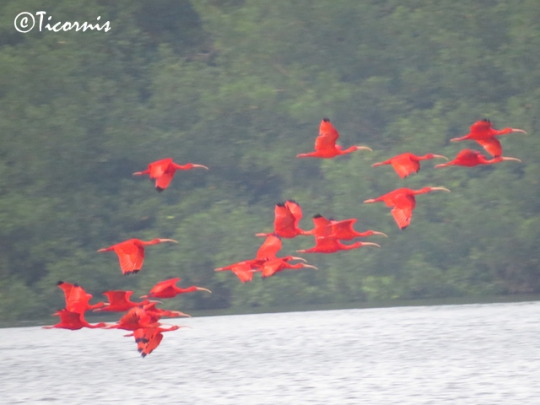
ADIOS TRINIDAD!!!
Time has come!! Today (26 Feb 2917), I will leave Trinidad & Asa Wright NC, on my way to Guyana.
My experience after so many years (20+) was very rewarding. I did see lots of bird species (120 sps), but no lifers. Other wildlife includes Red-rumped Agouti, Tropical Opposum, Red-tailed Squirrel, Tegu Lizard.
One of the highlights of the trip was the visit to Carone Bird Sanctuary, near Port of Spain, and to see hundreds of Scarlet Ibis coming into this mangrove forest to roost.
Hasta la próxima, Trinidad!!!
0 notes